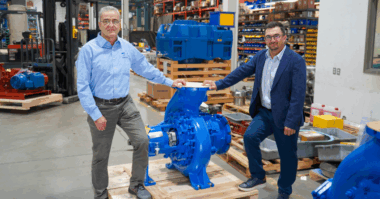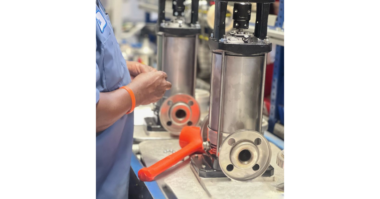The modern wastewater stream presents large challenges for utilities and operators of wastewater systems. Ragging and stringy materials combined with fats, oils, and greases will continue to plague pumping systems for the foreseeable future. Water saving measures and regulations such as Low flow toilets and shower heads have reduced the amount of fluid available within pumping systems. Cleaning wipes and rags that are flushed down toilets have introduced new materials. Fats, oils, and greases or “FOGs” have continued to traditionally be washed down drains. When you combine these factors together, a phenomenon is produced that absolutely must be addressed by utilities and operators. State of the art pumping systems and best practices attempt to solve the dilemma of the modern wastewater stream.
Fibrous materials that do not fully degrade or break down in the wastewater stream are generated by consumer products that continue to be “flushed”. Manufacturers advertise these products to be “flushable” or “non-flushable”; However, the challenge is that the consumer typically does not realize that different types of products may be flushable or not. Household cleaning products such as wipes, cloths, tissues, and synthetics continue to be flushed into the wastewater stream where they break down into stringy materials. Fibrous stringy materials also act as very good filtration objects and catch organic materials such as fats, oils, and greases. “FOGs” increase the surface tension of the fibers which leads to accumulation. Combined with the decreased volume of fluids available, stringy materials represent an increase in composition of the modern wastewater stream.
Traditional impeller types are challenged as fibrous stringy materials may collect on leading edges. When pump operation leads to lower flow rates resulting in suction recirculation, fibrous materials may aggregate into longer rope like consistencies. Clogging by fibrous materials is independent of spherical size. The rope like materials then fold over both sides of the impeller to become trapped and will form and gather at the impeller eye. Once the accumulation becomes big enough to contact the casing or volute, drag is created which lowers the efficiency of the pump and may lead to overloading conditions as the clog increases. Clogging may also impact bearing life as clogs generate radial imbalances. Eventually a clog will stop pump operation altogether.
EBARA’s DKEU pumps are designed and specified to handle the modern wastewater stream with state-of-the art Anti-Clog technology. The Anti-Clog mixed flow impeller has a back-swept leading edge that is shaped in such a way that any material is swept outward preventing accumulation of rope like materials in the impeller eye area. A guide pin then directs material to a groove in the suction plate which works in concert with the impeller to continue sweeping materials outward into the volute area where fibrous stringy solids can then be discharged into the piping system. DKEU pumps also feature premium efficient IE3 motors equivalent to IEC 60034-30 that when combined with Anti-Clog hydraulic efficiencies allow the DKEU to meet world-class operational efficiency. Closed loop cooling jackets using propylene glycol keep motors cool without the need for limited time of operation when fluid levels in the wet well are low. Closed loop cooling also offers an advantage over open loop systems where fibrous stringy solids are not pumped through the cooling system. Overall, the DKEU pump with Anti-Clog technology is well suited to avoid clogging of fibrous stringy materials while lowering operational costs. A state-of-the-art solution for today’s wastewater stream challenge.
Read more about EBARA Pumps Americas.




